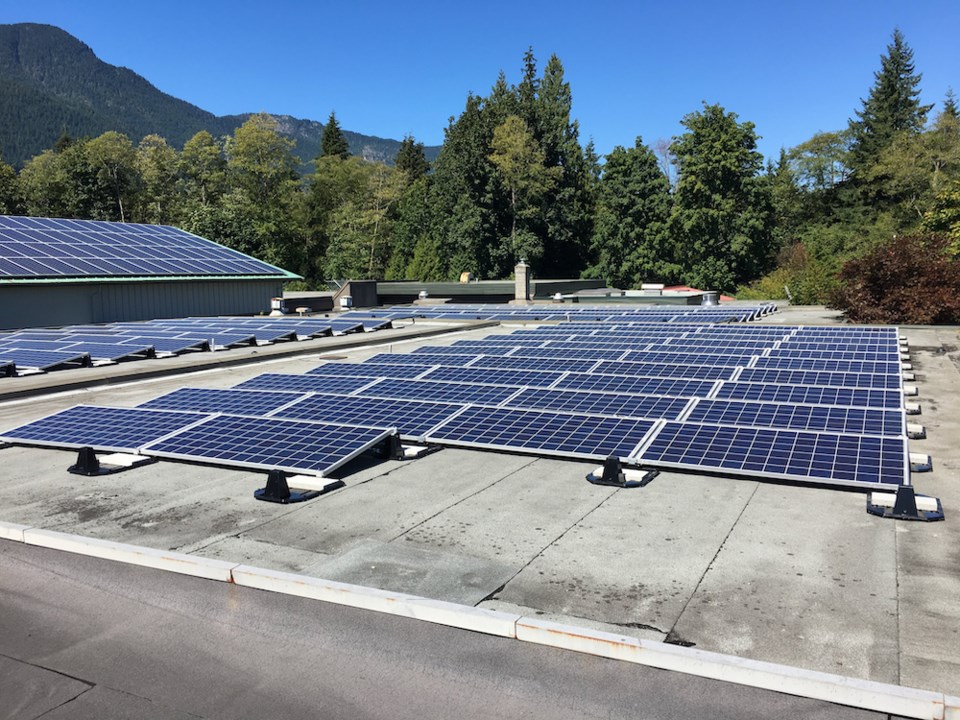The Sunshine Coast's School District 46 is a real star when it comes to solar and other climate-saving measures. I spoke with four people from the district about their vision, leadership and commitment to climate change goals.
At the Community Solar Association’s recent AGM, SD46 school board chair Amanda Amaral showed photos and graphs of their extensive solar arrays on six schools totalling over 500,000 kW. She believes that the 134,000 kW array on Gibsons Elementary School is the largest on any school in B.C. and that no other school district has achieved their extent of solar panel installations.
SD46 Secretary-Treasurer Nick Weswick says that the motivation for installing the solar arrays on district schools was “operational savings, allowing them to spend more on their main focus—the students.” Calling it a “win-win” for the school district, he notes that solar panels support their climate change goals. He credits Betty Baxter, a previous chair of the school board for getting the ball rolling, saying that grants offered through the Ministry of Education provided the opportunity to finance the solar systems. Pender Harbour Secondary has a battery-backup system in addition to a large solar array. Whenever the school used to lose power (which happened surprisingly often), all the students were sent home since the pumps that handled the water system and toilets were affected. The solar array has helped them keep the school open many more hours.
SD46 Facilities Manager Rob Collison says that applying for funding through the Ministry of Education’s capital programs wasn’t difficult. In the case of Kinnikinnick Elementary, they applied for funding to replace 19 end-of-life gas-fired rooftop heating units with heat pumps. The 118,000 kW solar array offsets the increased electrical use adding, “We are trying to electrify our heating systems wherever possible to reduce greenhouse gas emissions, but that comes with added cost as electricity is more expensive than natural gas. Solar has proven to be a great way to offset that cost.”
Establishing an “Energy Matters” program was Collison’s brainchild to encourage buy-in from staff and students to reduce energy use. Co-ordinator Johan Stroman provides teachers with materials to help students explore climate change solutions, and show how choices around diet, transportation, home heating and lighting can help. Designed for grades 5–7, the program is also applicable to high school. Stroman and Collison are available to speak to classes about climate change science as well as local and global solutions, and importantly, school-level solutions.
Students have access to how their school is using electricity and Stroman says, “Many classes get into playing detective to try to understand the spikes in increased usage at certain times of day.” He goes on to say: “Each year an ‘Energy Cup’ is hosted by schools across the district where students compete to save energy and emissions. In 2019, the district saved $1,000 on energy and a half tonne of building emissions through student-led initiatives.” The leadership shown by SD46 board, staff and students in taking action on climate change is sure to inspire others!


